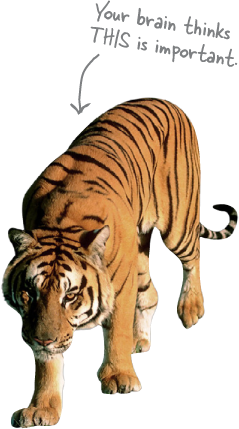how to use this book: Intro

Note
In this section, we answer the burning question: “So why DID they put that in a book on Go?”
Who is this book for?
If you can answer “yes” to all of these:
Do you have access to a computer with a text editor?
Do you want to learn a programming language that makes development fast and productive?
Do you prefer stimulating dinner-party conversation to dry, dull, academic lectures?
this book is for you.
Who should probably back away from this book?
If you can answer “yes” to any one of these:
Are you completely new to computers?
(You don’t need to be advanced, but you should understand folders and files, how to open a terminal app, and how to use a simple text editor.)
Are you a ninja rockstar developer looking for a reference book?
Are you afraid to try something new? Would you rather have a root canal than mix stripes with plaid? Do you believe that a technical book can’t be serious if it’s full of bad puns?
this book is not for you.

Note
[Note from Marketing: this book is for anyone with a valid credit card.]
We know what you’re thinking
“How can this be a serious book on developing in Go?”
“What’s with all the graphics?”
“Can I actually learn it this way?”
We know what your brain is thinking
Your brain craves novelty. It’s always searching, scanning, waiting for something unusual. It was built that way, and it helps you stay alive.
So what does your brain do with all the routine, ordinary, normal things you encounter? Everything it can to stop them from interfering with the brain’s real job—recording things that matter. It doesn’t bother saving the boring things; they never make it past the “this is obviously not important” filter.
How does your brain know what’s important? Suppose you’re out for a day hike and a tiger jumps in front of you—what happens inside your head and body?
Neurons fire. Emotions crank up. Chemicals surge.
And that’s how your brain knows…

This must be important! Don’t forget it!
But imagine you’re at home or in a library. It’s a safe, warm, tiger-free zone. You’re studying. Getting ready for an exam. Or trying to learn some tough technical topic your boss thinks will take a week, 10 days at the most.
Just one problem. Your brain’s trying to do you a big favor. It’s trying to make sure that this obviously unimportant content doesn’t clutter up scarce resources. Resources that are better spent storing the really big things. Like tigers. Like the danger of fire. Like how you should never have posted those party photos on your Facebook page. And there’s no simple way to tell your brain, “Hey, brain, thank you very much, but no matter how dull this book is, no matter how little I’m registering on the emotional Richter scale right now, I really do want you to keep this stuff around.”

Metacognition: thinking about thinking
If you really want to learn, and you want to learn more quickly and more deeply, pay attention to how you pay attention. Think about how you think. Learn how you learn.
Most of us did not take courses on metacognition or learning theory when we were growing up. We were expected to learn, but rarely taught to learn.
But we assume that if you’re holding this book, you really want to learn how to write Go programs. And you probably don’t want to spend a lot of time. If you want to use what you read in this book, you need to remember what you read. And for that, you’ve got to understand it. To get the most from this book, or any book or learning experience, take responsibility for your brain. Your brain on this content.
The trick is to get your brain to see the new material you’re learning as Really Important. Crucial to your well-being. As important as a tiger. Otherwise, you’re in for a constant battle, with your brain doing its best to keep the new content from sticking.

So just how DO you get your brain to treat programming like it’s a hungry tiger?
There’s the slow, tedious way, or the faster, more effective way. The slow way is about sheer repetition. You obviously know that you are able to learn and remember even the dullest of topics if you keep pounding the same thing into your brain. With enough repetition, your brain says, “This doesn’t feel important to him, but he keeps looking at the same thing over and over and over, so I suppose it must be.”
The faster way is to do anything that increases brain activity, especially different types of brain activity. The things on the previous page are a big part of the solution, and they’re all things that have been proven to help your brain work in your favor. For example, studies show that putting words within the pictures they describe (as opposed to somewhere else in the page, like a caption or in the body text) causes your brain to try to make sense of how the words and picture relate, and this causes more neurons to fire. More neurons firing = more chances for your brain to get that this is something worth paying attention to, and possibly recording.
A conversational style helps because people tend to pay more attention when they perceive that they’re in a conversation, since they’re expected to follow along and hold up their end. The amazing thing is, your brain doesn’t necessarily care that the “conversation” is between you and a book! On the other hand, if the writing style is formal and dry, your brain perceives it the same way you experience being lectured to while sitting in a roomful of passive attendees. No need to stay awake.
But pictures and conversational style are just the beginning…
Here’s what WE did
We used pictures, because your brain is tuned for visuals, not text. As far as your brain’s concerned, a picture really is worth a thousand words. And when text and pictures work together, we embedded the text in the pictures because your brain works more effectively when the text is within the thing it refers to, as opposed to in a caption or buried in the body text somewhere.
We used redundancy, saying the same thing in different ways and with different media types, and multiple senses, to increase the chance that the content gets coded into more than one area of your brain.
We used concepts and pictures in unexpected ways because your brain is tuned for novelty, and we used pictures and ideas with at least some emotional content, because your brain is tuned to pay attention to the biochemistry of emotions. That which causes you to feel something is more likely to be remembered, even if that feeling is nothing more than a little humor, surprise, or interest.
We used a personalized, conversational style, because your brain is tuned to pay more attention when it believes you’re in a conversation than if it thinks you’re passively listening to a presentation. Your brain does this even when you’re reading.
We included activities, because your brain is tuned to learn and remember more when you do things than when you read about things. And we made the exercises challenging-yet-doable, because that’s what most people prefer.
We used multiple learning styles, because you might prefer step-by-step procedures, while someone else wants to understand the big picture first, and someone else just wants to see an example. But regardless of your own learning preference, everyone benefits from seeing the same content represented in multiple ways.
We include content for both sides of your brain, because the more of your brain you engage, the more likely you are to learn and remember, and the longer you can stay focused. Since working one side of the brain often means giving the other side a chance to rest, you can be more productive at learning for a longer period of time.
And we included stories and exercises that present more than one point of view, because your brain is tuned to learn more deeply when it’s forced to make evaluations and judgments.
We included challenges, with exercises, and by asking questions that don’t always have a straight answer, because your brain is tuned to learn and remember when it has to work at something. Think about it—you can’t get your body in shape just by watching people at the gym. But we did our best to make sure that when you’re working hard, it’s on the right things. That you’re not spending one extra dendrite processing a hard-to-understand example, or parsing difficult, jargon-laden, or overly terse text.
We used people. In stories, examples, pictures, etc., because, well, you’re a person. And your brain pays more attention to people than it does to things.
Here’s what YOU can do to bend your brain into submission
So, we did our part. The rest is up to you. These tips are a starting point; listen to your brain and figure out what works for you and what doesn’t. Try new things.

Note
Cut this out and stick it on your refrigerator.
Slow down. The more you understand, the less you have to memorize.
Don’t just read. Stop and think. When the book asks you a question, don’t just skip to the answer. Imagine that someone really is asking the question. The more deeply you force your brain to think, the better chance you have of learning and remembering.
Do the exercises. Write your own notes.
We put them in, but if we did them for you, that would be like having someone else do your workouts for you. And don’t just look at the exercises. Use a pencil. There’s plenty of evidence that physical activity while learning can increase the learning.
Read “There Are No Dumb Questions.”
That means all of them. They’re not optional sidebars, they’re part of the core content! Don’t skip them.
Make this the last thing you read before bed. Or at least the last challenging thing.
Part of the learning (especially the transfer to long-term memory) happens after you put the book down. Your brain needs time on its own, to do more processing. If you put in something new during that processing time, some of what you just learned will be lost.
Talk about it. Out loud.
Speaking activates a different part of the brain. If you’re trying to understand something, or increase your chance of remembering it later, say it out loud. Better still, try to explain it out loud to someone else. You’ll learn more quickly, and you might uncover ideas you hadn’t known were there when you were reading about it.
Drink water. Lots of it.
Your brain works best in a nice bath of fluid. Dehydration (which can happen before you ever feel thirsty) decreases cognitive function.
Listen to your brain.
Pay attention to whether your brain is getting overloaded. If you find yourself starting to skim the surface or forget what you just read, it’s time for a break. Once you go past a certain point, you won’t learn faster by trying to shove more in, and you might even hurt the process.
Feel something.
Your brain needs to know that this matters. Get involved with the stories. Make up your own captions for the photos. Groaning over a bad joke is still better than feeling nothing at all.
Write a lot of code!
There’s only one way to learn to develop Go programs: write a lot of code. And that’s what you’re going to do throughout this book. Coding is a skill, and the only way to get good at it is to practice. We’re going to give you a lot of practice: every chapter has exercises that pose a problem for you to solve. Don’t just skip over them—a lot of the learning happens when you solve the exercises. We included a solution to each exercise—don’t be afraid to peek at the solution if you get stuck! (It’s easy to get snagged on something small.) But try to solve the problem before you look at the solution. And definitely get it working before you move on to the next part of the book.
Read me
This is a learning experience, not a reference book. We deliberately stripped out everything that might get in the way of learning whatever it is we’re working on at that point in the book. And the first time through, you need to begin at the beginning, because the book makes assumptions about what you’ve already seen and learned.
It helps if you’ve done a little programming in some other language.
Most developers discover Go after they’ve learned some other programming language. (They often come seeking refuge from that other language.) We touch on the basics enough that a complete beginner can get by, but we don’t go into great detail on what a variable is, or how an if statement works. You’ll have an easier time if you’ve done at least a little of this before.
We don’t cover every type, function, and package ever created.
Go comes with a lot of software packages built in. Sure, they’re all interesting, but we couldn’t cover them all even if this book was twice as long. Our focus is on the core types and functions that matter to you, the beginner. We make sure you have a deep understanding of them, and confidence that you know how and when to use them. In any case, once you’re done with Head First Go, you’ll be able to pick up any reference book and get up to speed quickly on the packages we left out.
The activities are NOT optional.
The exercises and activities are not add-ons; they’re part of the core content of the book. Some of them are to help with memory, some are for understanding, and some will help you apply what you’ve learned. Don’t skip the exercises.
The redundancy is intentional and important.
One distinct difference in a Head First book is that we want you to really get it. And we want you to finish the book remembering what you’ve learned. Most reference books don’t have retention and recall as a goal, but this book is about learning, so you’ll see some of the same concepts come up more than once.
The code examples are as lean as possible.
It’s frustrating to wade through 200 lines of code looking for the two lines you need to understand. Most examples in this book are shown in the smallest possible context, so that the part you’re trying to learn is clear and simple. So don’t expect the code to be robust, or even complete. That’s your assignment after you finish the book. The book examples are written specifically for learning, and aren’t always fully functional.
We’ve placed all the example files on the web so you can download them. You’ll find them at http://headfirstgo.com/.
Acknowledgments
Series founders:
Huge thanks to the Head First founders, Kathy Sierra and Bert Bates. I loved the series when I encountered it more than a decade ago, but never imagined I might be writing for it. Thank you for creating this amazing style of teaching!
At O’Reilly:
Thanks to everyone at O’Reilly who made this happen, particularly editor Jeff Bleiel, and to Kristen Brown, Rachel Monaghan, and the rest of the production team.
Technical reviewers:
Everyone makes mistakes, but luckily I have tech reviewers Tim Heckman, Edward Yue Shung Wong, and Stefan Pochmann to catch all of mine. You will never know how many problems they found, because I swiftly destroyed all the evidence. But their help and feedback were definitely necessary and are forever appreciated!
And more thanks:
Thanks to Leo Richardson for additional proofreading.
Perhaps most importantly, thanks to Christine, Courtney, Bryan, Lenny, and Jeremy for their patience and support (for two books now)!
O’Reilly Online Learning
For almost 40 years, O’Reilly Media has provided technology and business training, knowledge, and insight to help companies succeed.
Our unique network of experts and innovators share their knowledge and expertise through books, articles, conferences, and our online learning platform. O’Reilly’s online learning platform gives you on-demand access to live training courses, in-depth learning paths, interactive coding environments, and a vast collection of text and video from O’Reilly and 200+ other publishers. For more information, please visit http://oreilly.com.
Get Head First Go now with the O’Reilly learning platform.
O’Reilly members experience books, live events, courses curated by job role, and more from O’Reilly and nearly 200 top publishers.

